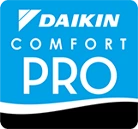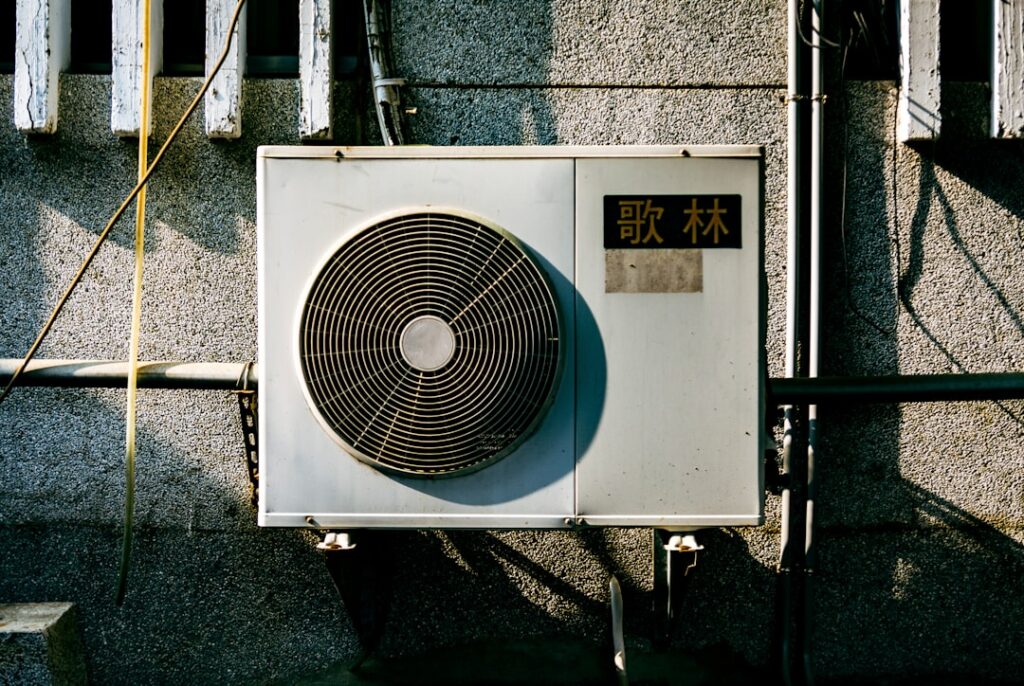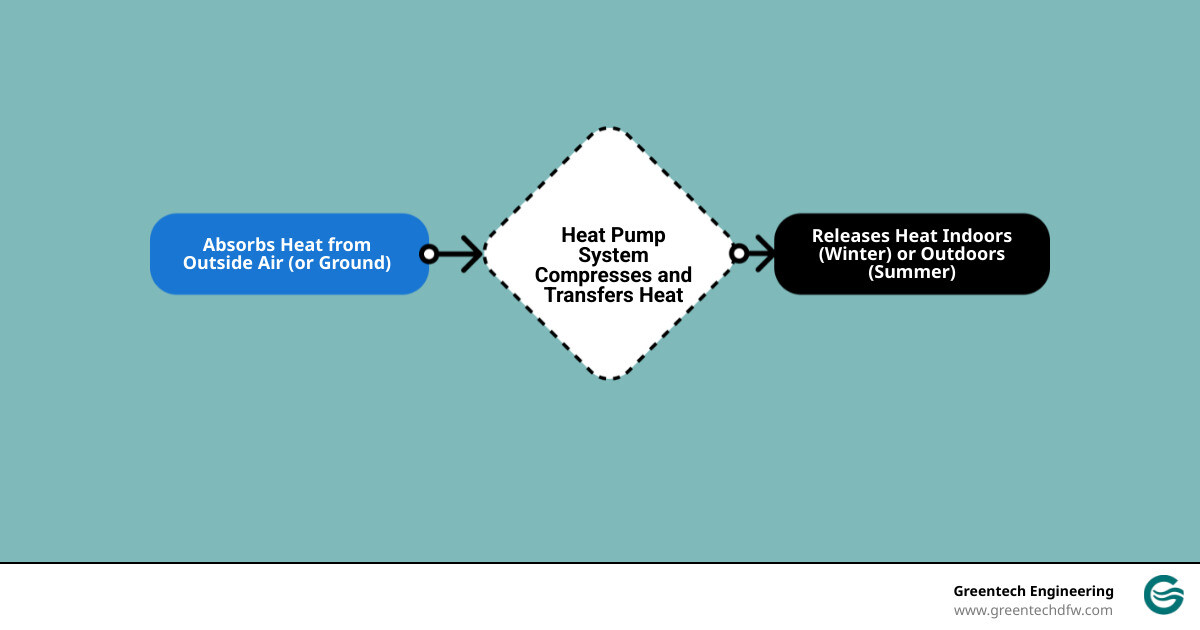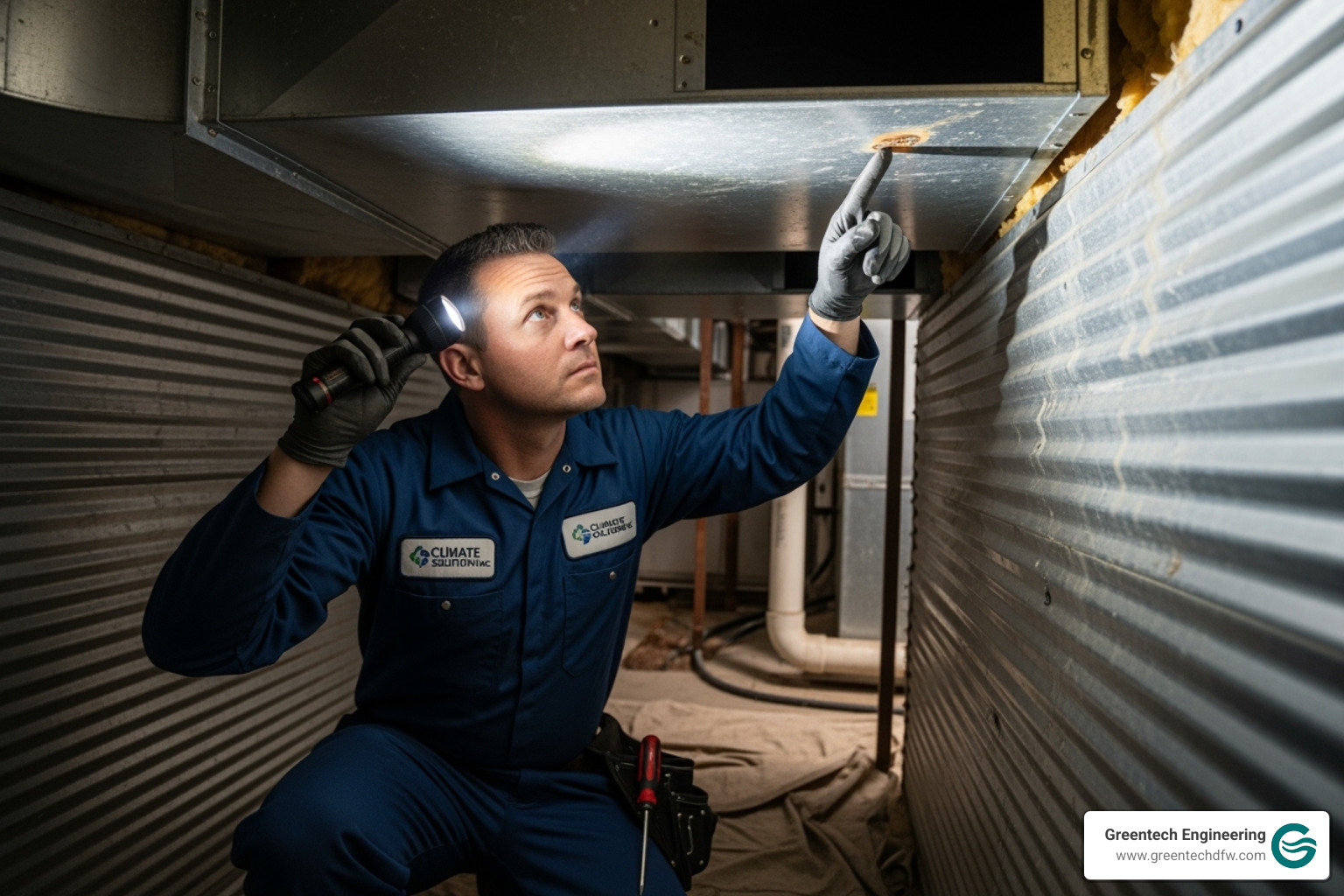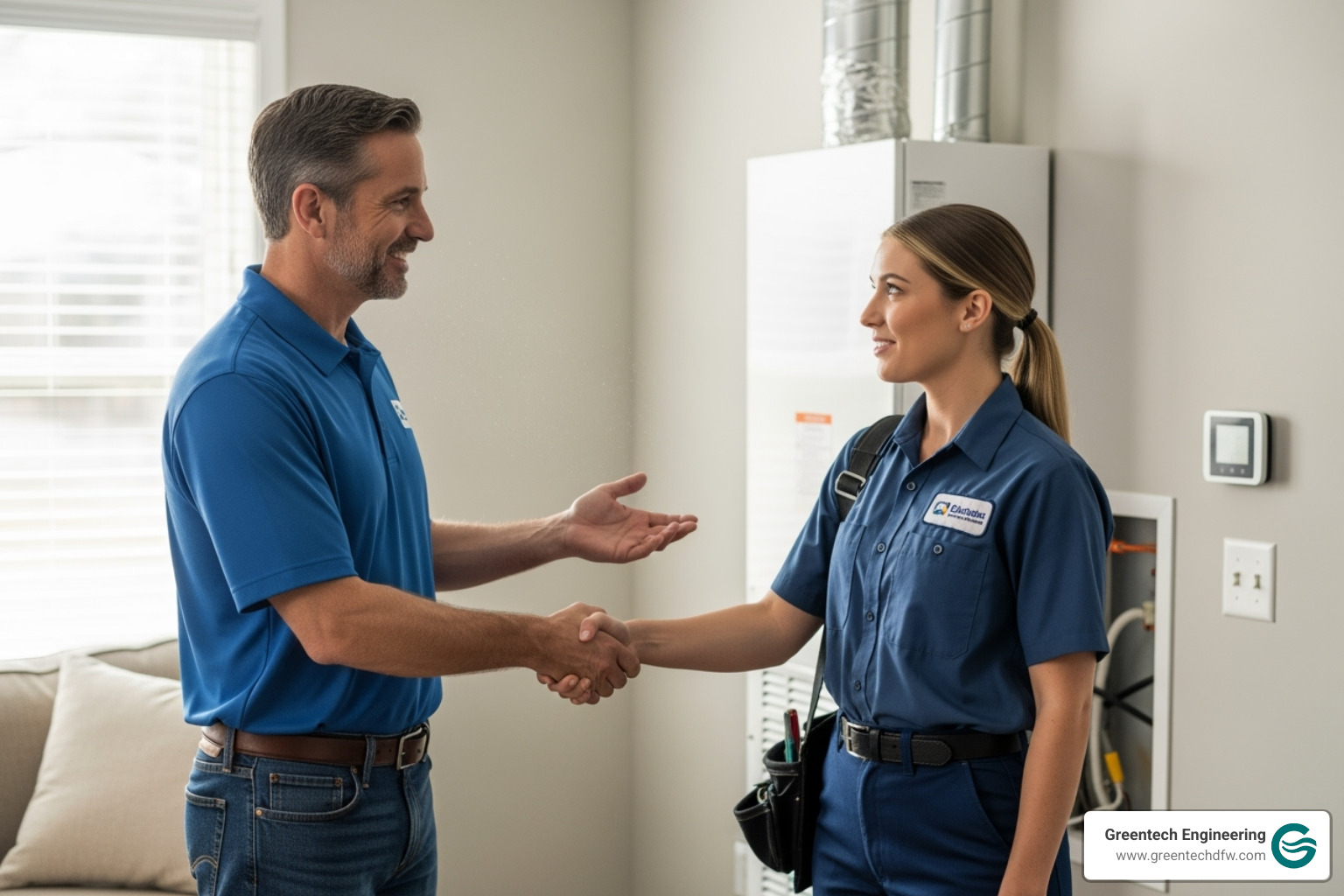Why a Professional Heat Pump Installation Matters
A professional heat pump installation varies by home. Understanding the key drivers helps you plan your project without surprises.
Main Project Factors:
- System Type: Air-source, mini-split, or geothermal systems
- Home Size: Square footage and BTU requirements
- Installation Complexity: Existing ductwork, electrical upgrades needed
- Efficiency Ratings: SEER and HSPF ratings impact performance
- Additional Requirements: Permits, old system removal, debris disposal
Typical Project Components:
- Equipment (heat pump unit)
- Labor for installation
- Materials and supplies
- Permit and inspection fees
- Electrical work (if needed)
Get multiple itemized assessments from licensed contractors to ensure a comprehensive plan for your specific situation.
Heat pumps provide year-round comfort by handling both heating and cooling in one efficient system. Instead of creating heat, they move it, making them more energy-efficient than conventional electric heating.
Projects aren’t one-size-fits-all; your home’s size, existing infrastructure, and local climate determine the final scope.
Understanding Different Heat Pump Systems
Installations vary widely—every home has unique needs, existing infrastructure, and comfort goals.
System types range from full whole-house systems (higher complexity) to mini-split systems for single rooms or zones (typically simpler), with geothermal systems at the premium end due to ground loop installation.
A proper heat pump installation plan is customized. A 1,500-square-foot ranch with good ductwork differs greatly from a two-story home that needs electrical upgrades.
What makes heat pumps particularly appealing is their dual functionality. As we explain in our guide on How Heat Pumps Provide Efficient Cooling, these systems handle both heating and cooling in one efficient package.
Differences Between Heat Pump Types
Air-source heat pumps are the most popular choice for the DFW climate. They come as central (ducted) systems or ductless mini-splits.
Central air-source systems connect to existing ductwork, operating like a central AC but providing heating too. If your ducts are in good condition, this option often fits well; if ducts are failing or absent, scope and complexity increase.
Ductless mini-split systems offer flexible zoning. Single-zone installs are straightforward; multi-zone setups can approach central-system complexity. They’re ideal for additions, homes without ducts, or precise temperature control.
Geothermal heat pumps deliver top-tier efficiency and comfort but require ground loop excavation, making installation more complex.
| Heat Pump Type | Installation Complexity (Relative) | Efficiency (Relative) | Ideal Use Case |
|---|---|---|---|
| Air-Source (Central) | Medium | High | Whole-home comfort with existing ductwork |
| Ductless Mini-Split | Low to Medium | High | Zoned comfort, additions, homes without ducts |
| Geothermal | Very High | Very High | Maximum efficiency, long-term performance |
How Home Size and Climate Affect System Selection
Your home’s size and BTU requirements depend on more than square footage—ceiling height, windows, and layout matter. Insulation quality can allow a smaller unit while maintaining comfort, while drafty homes need larger capacity.
Our North Texas climate demands systems that handle hot, humid summers and mild winters efficiently—modern heat pumps are designed for exactly that. For proper sizing guidance, see the Pacific Northwest National Laboratory’s resources on How to Size HVAC Systems Correctly. Your home layout—open plans versus many separate rooms—also influences air distribution and configuration.
Key Factors That Influence Your Heat Pump Installation
A heat pump installation plan covers more than equipment. Labor, duct and electrical work, controls, permits, and inspections all shape the project. Homes with sound ductwork and adequate electrical service are simpler; others may need updates to ensure performance and safety.
System Efficiency and Features
SEER and HSPF ratings indicate cooling and heating efficiency. Higher ratings reflect advanced technology and lower energy use.
Compressor technology matters. Single-speed compressors cycle on/off, while variable-speed compressors modulate output for quieter operation, better humidity control, and higher efficiency.
Brand reputation and solid warranties reduce headaches over the long term. We work with trusted manufacturers like Daikin for reliability and support.
Modern systems often include smart thermostat compatibility. Many newer units use R-32 refrigerant, which is more environmentally friendly and efficient—see Why Choose R-32 Refrigerant for Your Home’s AC and Heat Pump?.
Additional Installation Requirements
Ductwork modifications may be needed to seal leaks, resize runs, or improve distribution—critical for system performance.
Electrical panel upgrades can be required for a dedicated 240V connection and safe operation in older homes.
Removing your old system includes proper disconnection, disposal, and responsible refrigerant handling.
Addressing these needs upfront prevents performance issues that look like equipment problems. Our guide on Common Heat Pump Problems covers scenarios that often trace back to installation quality.
Maximizing Your Investment: Savings and Incentives
Installing a heat pump is one of the smartest upgrades you can make for comfort and long-term efficiency. While your heat pump installation estimate reflects the work involved, the real value shows up as lower utility use year after year.
Heat pumps move heat instead of generating it, so they use less energy than traditional electric heating while providing year-round heating and cooling.
Calculating Potential Energy Savings
Heat pumps typically use 40-60% less electricity than traditional electric heating. If you currently rely on electric resistance heat, switching can cut heating use nearly in half. Even when replacing older, inefficient systems, annual savings add up quickly.
Exact savings depend on local rates, your old system, insulation quality, and usage habits. The National Renewable Energy Laboratory reports consistent, significant energy and cost reductions from real-world installations.
Government Rebates and Tax Credits
Incentives can offset a significant portion of your heat pump installation estimate. The federal tax credit directly reduces your tax bill for qualifying air-source heat pumps—see current details at ENERGY STAR.
State, local, and utility rebates may also be available. Search the Database of State Incentives for Renewables and Efficiency to see what’s offered in your area. We’ve helped DFW homeowners stack incentives, such as this project: Daikin HVAC System Installation in Southlake, TX High Efficiency AC & Furnace with $1200 Tax Credit.
Choosing the Right Unit and a Trustworthy Installer
Making the decision to install a heat pump is exciting, but it can also feel overwhelming. You’re not just buying equipment – you’re choosing a comfort solution for your family for years to come. The good news? With the right knowledge and a trustworthy installer, you’ll end up with a system that keeps you comfortable and performs efficiently.
Think of it like buying a car. You wouldn’t just walk into a dealership and point at the first vehicle you see, right? The same goes for heat pumps. Taking time to understand what makes a quality unit and finding an installer who genuinely cares about your comfort makes all the difference.
What to Look for in a Heat Pump
Shopping for a heat pump isn’t just about finding a particular model. You want a system that’ll serve your family well for the next 15+ years. Here’s what really matters:
ENERGY STAR certification should be your starting point. These units meet strict efficiency guidelines, which means better performance. It’s a clear indicator of a high-quality, efficient appliance.
Proper sizing calculations are absolutely critical. A qualified contractor should perform detailed load calculations (called Manual J calculations) to determine exactly what capacity your home needs. This isn’t guesswork – it’s science. An undersized unit will struggle to keep you comfortable, while an oversized one will cycle improperly and wear out faster. Your contractor should consider your home’s square footage, insulation quality, window types, and even which direction your house faces.
Warranty coverage tells you a lot about a manufacturer’s confidence in their product. Look for comprehensive warranties – typically 10 years on the compressor and 5 years on parts. A solid warranty gives you peace of mind.
Noise levels matter more than you might think. Heat pumps are generally quiet, but if your outdoor unit will be near a bedroom window or patio, check the decibel rating. Nobody wants their relaxing evening disrupted by a noisy unit.
Brand reputation plays a big role in long-term satisfaction. Quality manufacturers invest in research, testing, and customer support. Many homeowners in our area are finding the benefits of reliable brands like Daikin, which have earned strong reputations for durability and innovation. You can learn more about this trend in our article Why More Texas Homeowners Are Switching to Daikin for Their HVAC Systems.
How to Get a Reliable Installation Assessment
Getting a trustworthy installation plan is like finding a good mechanic – it takes a little homework, but it’s worth the effort. The right contractor will be your partner in creating a comfortable, efficient home.
Multiple assessments are essential. We recommend getting at least three assessments from reputable contractors. This isn’t about comparing numbers – it’s about comparing the proposed equipment, scope of work, and overall professionalism. If one plan is dramatically different from the others, that’s worth investigating.
Itemized proposals separate the pros from the wannabes. A trustworthy contractor will break down every aspect of your project – equipment, labor, materials, permits, and any additional work like electrical upgrades. This transparency means no surprises later. If someone gives you just one lump summary with no details, keep looking.
Licensed and insured contractors aren’t negotiable. Licensing means they’ve met industry standards and know local codes. Insurance protects you if something goes wrong during installation. Don’t be shy about asking to see these credentials – legitimate contractors are proud to show them.
References and reviews tell the real story. Ask for recent customer references and actually call them. Check online reviews on Google, Yelp, and the Better Business Bureau. Look for patterns – do customers consistently mention punctuality, cleanliness, and follow-up service? These details matter.
Avoid phone-only proposals. Any contractor who offers a firm plan without visiting your home is basically throwing darts at a dartboard. A proper assessment requires seeing your space, evaluating existing ductwork, checking electrical capacity, and understanding your specific needs. Professional assessment is crucial for both proper installation and long-term performance, as highlighted in our article about the Importance of Professional Heat Pump Repair.
The best contractors will ask lots of questions about your comfort preferences, current system issues, and long-term goals. They’re not just selling equipment – they’re solving problems and improving your quality of life. When you find that kind of partner, you’ll know you’re in good hands.
Frequently Asked Questions about Heat Pump Installation
We get a lot of questions from homeowners who are curious about heat pumps but want to understand the full picture before making their decision. Here are the most common ones we hear, along with honest answers that help you know what to expect.
How long does a heat pump typically last?
Most heat pumps will serve your family faithfully for 15 years on average, though with proper care, many systems keep running efficiently for up to 20 years. That’s actually quite impressive when you consider how hard these systems work year-round, providing both your heating and cooling needs.
The secret to reaching that upper end of the lifespan range? Maintenance makes all the difference. A heat pump that receives regular professional attention and basic homeowner care will far outlast one that’s neglected. It’s similar to how a well-maintained car can run for hundreds of thousands of miles while a neglected one breaks down much sooner.
You’ll start seeing signs of replacement when your heat pump approaches that 15-year mark, especially if it’s struggling to maintain comfortable temperatures, making unusual noises, or running inefficiently. Sometimes what seems like a major problem is actually just a minor repair issue, which is why we always recommend having a professional assessment before assuming replacement is necessary. Our guide on the Benefits of Timely Heat Pump Repair explains how addressing small issues early can extend your system’s life significantly.
What are the main benefits of a heat pump over a traditional furnace and AC?
The biggest advantage of a heat pump is that it’s essentially an all-in-one system that handles both heating and cooling from a single unit. Instead of maintaining two separate systems – a furnace for winter and an air conditioner for summer – you have one efficient system that does both jobs beautifully.
Heat pumps achieve high energy efficiency because they don’t create heat from scratch like a furnace does. Instead, they simply move existing heat from one place to another, which requires much less energy. This leads to more efficient operation compared to traditional electric heating.
From an environmental perspective, heat pumps offer a reduced carbon footprint since they don’t burn fossil fuels on-site and use electricity more efficiently than conventional heating systems. When paired with renewable energy sources, they become an even greener choice for environmentally conscious homeowners.
Perhaps most importantly for day-to-day comfort, modern heat pumps provide improved indoor comfort with more consistent temperatures throughout your home. They excel at maintaining steady temperatures without the hot and cold spots that sometimes occur with traditional systems, and they do an excellent job of controlling humidity levels too.
Do heat pumps require a lot of maintenance?
Heat pumps don’t require excessive maintenance, but they do thrive on routine maintenance – think of it as keeping your system healthy rather than fixing it after it breaks. The good news is that much of the basic care is simple enough for homeowners to handle themselves.
The most important thing you can do is stay on top of filter changes. A dirty filter is like asking your heat pump to breathe through a straw – it makes everything harder and less efficient. We recommend checking your filter monthly and replacing it every one to three months, depending on factors like pet hair, dust levels, and how often you run the system.
Annual professional tune-ups are where the real magic happens. During these visits, our technicians perform thorough coil cleaning, check refrigerant levels, inspect electrical connections, and catch small issues before they become expensive problems. It’s like getting an annual physical for your heat pump – preventive care that keeps everything running smoothly.
The beauty of consistent maintenance is that a well-maintained heat pump runs more efficiently, lasts longer, and rarely surprises you with unexpected breakdowns. Our comprehensive HVAC Services Carrollton, TX include all these essential maintenance services, giving you peace of mind that your system is in expert hands.
Get a Transparent Heat Pump Assessment in the DFW Area
Getting a fair and honest heat pump installation plan doesn’t have to be a mystery. Throughout this guide, we’ve walked through all the pieces that shape your project – from the type of system that’s right for your home to the efficiency features that will improve your comfort for years to come. The key takeaway? Every home is unique, and a proper assessment is the only way to get an accurate picture of what your project will involve.
Here at Greentech Engineering, we’ve built our reputation on doing things differently. While some companies might give you a quick proposal over the phone or pressure you into a same-day decision, we believe in taking the time to understand your home’s specific needs. Our approach is refreshingly straightforward – no hidden details, no surprise work orders, and no pushy sales tactics. Just honest expertise and transparent planning.
We’ve been helping homeowners throughout the Greater DFW Area make smart decisions about their comfort systems, and we’ve seen how the right heat pump can transform a home’s comfort. Whether you’re in Carrollton, Plano, Dallas, or anywhere else in our service area, we bring the same commitment to quality and honesty to every project.
A professional assessment is really the foundation of everything. When we visit your home, we’re not just looking at square footage – we’re evaluating your existing ductwork, checking your electrical setup, considering your home’s insulation, and understanding how you actually use your space. This thorough approach means your heat pump installation plan reflects reality, not guesswork.
We’re proud of the relationships we’ve built with homeowners who trust us with their comfort. Our recent Customer Successful Story: HVAC System Upgrade, Heat Pump Replacement Frisco, TX shows exactly what we mean – a smooth project from start to finish, with results that exceeded expectations.
Ready to see what a heat pump can do for your home? We’d love to provide you with an honest, detailed assessment. Contact us for your Heat Pump Services in Carrollton, TX, and let’s start a conversation about your comfort goals. No pressure, no surprises – just the expertise you need to make an informed decision.

